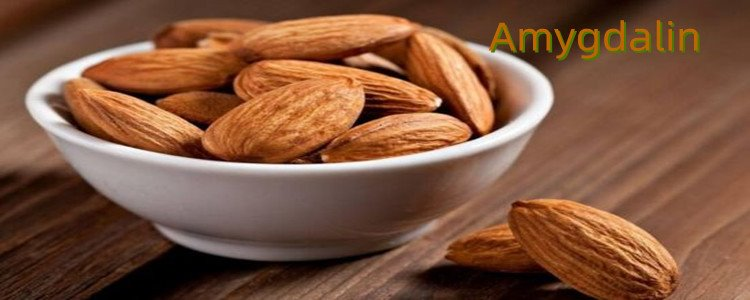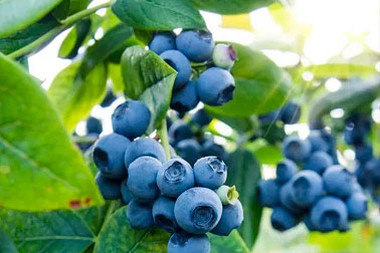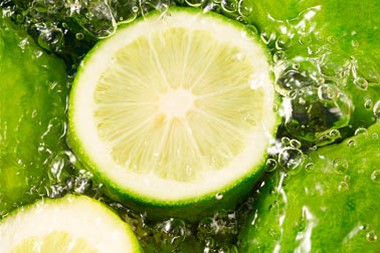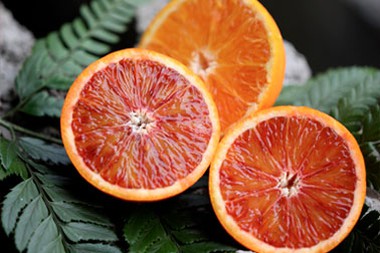The Aromatic Profile of Amygdalin Powder
Introduction
it is a natural compound found in various plants, particularly in the kernels of certain fruits, such as apricots, bitter almonds, and apples. Widely used in the food and pharmaceutical industries, it offers a distinct aroma that contributes to its appeal in various products. In this article, we will explore the olfactory characteristics of it, providing insights into its fragrance and how it enhances sensory experiences.
1. Source and Extraction
it is derived from plant sources rich in this compound, most notably bitter almonds and apricot kernels. The process of extraction involves crushing and grinding these kernels, followed by careful separation of the desired powder from other components. It is important to note that amygdalin is distinct from other compounds found in these fruits, such as laetrile, and has its unique fragrance.
2. Fragrance Profile
The aroma of it is characterized by a delicate balance of sweet and bitter notes, which can be attributed to its chemical composition. It has a sweet, almond-like scent combined with a subtle bitterness that adds depth to the overall fragrance. The presence of these olfactory elements contributes to the sensory experience of it in various applications.
3. Sensory Applications
3.1. Food Industry
it is widely used in the food industry as a natural flavoring agent. Its aroma enhances the sensory appeal of numerous products, including baked goods, confectionery, beverages, and dairy items. When added to these food products, amygdalin powder imparts a pleasant almond-like fragrance that elevates the overall sensory experience.
3.2. Perfumery
The distinct fragrance of amygdalin powder finds its application in the world of perfumery. Renowned perfumers often incorporate amygdalin as a note in their compositions to provide a sweet, nutty, or marzipan-like scent. It adds complexity and a natural allure to perfumes, creating a harmonious blend of fragrances.
3.3. Aromatherapy
The therapeutic qualities associated with the aroma of Amygdalin Powder make it a popular choice in aromatherapy practices. The fragrance is believed to have a calming effect, promoting relaxation and stress relief. it may be used in diffusers, massage oils, or bath products to create an aromatic environment conducive to well-being.
4. Quality and Storage
To preserve the aromatic qualities of it, proper storage conditions are essential. It is recommended to store the powder in airtight containers away from direct sunlight and excessive heat. This helps maintain its fragrance and extends its shelf life, ensuring that the product retains its olfactory characteristics over time.
Conclusion
it possesses a captivating aroma characterized by a delightful combination of sweet and bitter notes. This fragrance adds value to a wide range of industries, including food, perfumery, and aromatherapy. By understanding the olfactory profile of it and its applications, manufacturers and consumers alike can appreciate the unique sensory experiences it offers.
Exploring Amygdalin-rich Foods A Comprehensive Guide
Introduction
Amygdalin, a naturally occurring compound found in various plant foods, has gained attention for its potential health benefits. In this article, we will delve into the world of amygdalin-rich foods, discussing their sources, nutritional profiles, and culinary applications. Whether you are a health-conscious individual or a culinary enthusiast, this guide will provide valuable insights into incorporating it-rich foods into your diet.
1. What is Amygdalin?
it is a cyanogenic glycoside, a compound that exists in many plants and seeds. It is particularly abundant in the Prunus family of plants, which includes almonds, apricots, peaches, and cherries. it serves as a natural defense mechanism for plants, protecting them from pests and diseases.
2. Natural Sources of Amygdalin
- Bitter Almonds Bitter almonds contain the highest concentration of it. They are primarily used for culinary purposes in small quantities due to their characteristic bitter taste.
- Apricot Kernels Apricot kernels, found within the pit of the apricot fruit, are another significant source of it.
- Other Stone Fruits Peaches, nectarines, plums, and cherries also contain it, albeit in lower amounts compared to bitter almonds and apricot kernels.
- Cassava Cassava, a starchy root vegetable widely consumed in tropical regions, contains it, but the levels are considerably lower than in the aforementioned sources.
3. Nutritional Profile of Amygdalin-rich Foods
Amygdalin-rich foods offer a range of nutrients in addition to their amygdalin content. For example
- Bitter almonds are a good source of healthy fats, protein, dietary fiber, vitamin E, and minerals like magnesium and phosphorus.
- Apricot kernels are rich in monounsaturated fats, dietary fiber, vitamin E, and minerals such as iron and potassium.
- Stone fruits like peaches and cherries provide vitamins A and C, dietary fiber, and various antioxidants.
4. Culinary Applications
Amygdalin-rich foods can be used in a variety of culinary preparations, enhancing both flavor and nutrition
- Almonds and apricot kernels can be ground into a fine powder and incorporated into baked goods, smoothies, or homemade energy bars.
- Stone fruits can be enjoyed fresh, added to fruit salads, or used in desserts like pies, cobblers, and compotes.
- Additionally, almond milk, a popular plant-based alternative to dairy milk, is derived from blanched almonds and retains some amygdalin content.
5. Safety Considerations
It is important to note that amygdalin contains cyanide, a toxic compound. However, the levels present in amygdalin-rich foods are generally considered safe for consumption when consumed in moderation. Industrial processing techniques, such as blanching and roasting, can further reduce cyanide levels.
6. Conclusion
Amygdalin-rich foods offer a diverse range of flavors and nutritional benefits. Incorporating them into a balanced diet can provide essential nutrients and contribute to a varied culinary experience. As with any food, it is advisable to consume amygdalin-rich foods in moderation and consult with a healthcare professional for personalized dietary advice.
By exploring the world of amygdalin-rich foods, individuals can discover new flavors, broaden their culinary horizons, and enjoy the potential health benefits these foods offer.
Revealing the Fruit with Abundant Amygdalin Content
Introduction
In the world of fruits, diversity reigns supreme. Each fruit brings its unique flavor, texture, and nutritional profile. Among the many components that contribute to their nutritional value, amygdalin stands out as a compound that has garnered attention. This article explores the fruit with the highest amygdalin content, shedding light on its properties, benefits, and culinary uses.
Amygdalin A Brief Overview
Amygdalin, a cyanogenic glycoside, is a compound found in various plants, including fruits. It is particularly abundant in the seeds or pits of certain fruits. When ingested, amygdalin can release hydrogen cyanide, which has led to both controversy and interest in its potential health benefits. While amygdalin itself does not possess direct medicinal properties, its derivative, laetrile, has been widely studied for its purported anticancer effects.
Identifying the Fruit with the Highest Amygdalin Content
Among the vast array of fruits, apricots are known to have the highest levels of amygdalin. Apricots belong to the Rosaceae family, and their scientific name is Prunus armeniaca. These small, orange-colored fruits are native to Asia and are widely cultivated around the world. Apart from apricots, other fruits that contain notable amounts of amygdalin include peaches, cherries, plums, and almonds.
Properties and Health Benefits of Apricots
Apricots offer more than just their delicious taste. They are rich in various nutrients, including vitamins A, C, and E, potassium, and dietary fiber. The presence of amygdalin in apricot seeds has sparked interest in its potential health benefits, although scientific evidence is limited.
1. Antioxidant Properties Apricots contain antioxidants that help protect the body against oxidative stress, reducing the risk of chronic diseases.
2. Eye Health The high vitamin A content in apricots promotes good vision and helps maintain eye health.
3. Digestive Health Apricots are a good source of dietary fiber, which aids in maintaining a healthy digestive system and preventing constipation.
4. Skin Health The vitamin E present in apricots nourishes the skin and helps maintain its elasticity, promoting a youthful appearance.
Culinary Uses of Apricots
Apricots can be enjoyed in various culinary preparations, adding a burst of flavor and nutritional goodness to dishes. Some popular uses of apricots include
1. Fresh Consumption Apricots are often eaten fresh, either on their own or added to fruit salads for a delightful mix of flavors.
2. Jams and Preserves Apricots are commonly used to make jams, jellies, and preserves, which can be enjoyed on toast or as a topping for desserts.
3. Baked Goods Dried apricots are a popular ingredient in cakes, muffins, and cookies, adding a sweet and tangy flavor to baked goods.
4. Savory Dishes Apricots can be incorporated into savory dishes, such as tagines and stews, providing a unique balance of sweetness and tartness.
Conclusion
While apricots contain the highest levels of amygdalin among fruits, it is important to note that amygdalin itself does not possess direct medicinal properties. The consumption of apricot seeds or amygdalin-rich foods should be done with caution, and it is always advisable to consult a healthcare professional before making any significant dietary changes. Enjoying apricots as part of a balanced diet can provide various health benefits, thanks to their nutrient-rich profile, without relying solely on the potential properties of amygdalin.
please contact us at email: selina@ciybio.com.cn




